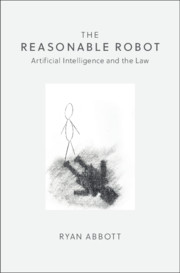Book contents
- The Reasonable Robot
- The Reasonable Robot
- Copyright page
- Dedication
- Contents
- Introduction: Artificial Intelligence and the Law
- 1 Understanding Artificial Intelligence
- 2 Should Artificial Intelligence Pay Taxes?
- 3 Reasonable Robots
- 4 Artificial Inventors
- 5 Everything Is Obvious
- 6 Punishing Artificial Intelligence
- 7 Alternative Perspectives on AI Legal Neutrality
- Third-Party Materials
- Notes
- Index
4 - Artificial Inventors
Published online by Cambridge University Press: 15 June 2020
- The Reasonable Robot
- The Reasonable Robot
- Copyright page
- Dedication
- Contents
- Introduction: Artificial Intelligence and the Law
- 1 Understanding Artificial Intelligence
- 2 Should Artificial Intelligence Pay Taxes?
- 3 Reasonable Robots
- 4 Artificial Inventors
- 5 Everything Is Obvious
- 6 Punishing Artificial Intelligence
- 7 Alternative Perspectives on AI Legal Neutrality
- Third-Party Materials
- Notes
- Index
Summary
AI is generating patentable inventions without a person involved who qualifies as an inventor. Yet, there are no rules about whether such an invention could be patented, who or what could qualify as an inventor, and who could own the patents. There are laws that require inventors be natural persons, but they predate inventive AI and were never intended to prohibit patents. AI-generated inventions should be patentable because this will incentivize the development of inventive AI and result in more benefits for everyone. When an AI invents, it should be listed as an inventor because listing a person would be unfair to legitimate inventors. Finally, an AI’s owner should own any patents on its output in the same way that people own other types of machine output. The chapter proceeds to address a host of challenges that would result from AI inventorship, ranging from ownership of AI-generated inventions and displacement of human inventors to the need for consumer protection policies.
Keywords
- Type
- Chapter
- Information
- The Reasonable RobotArtificial Intelligence and the Law, pp. 71 - 91Publisher: Cambridge University PressPrint publication year: 2020
- 3
- Cited by

